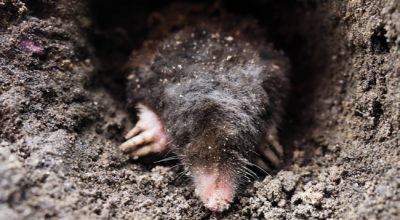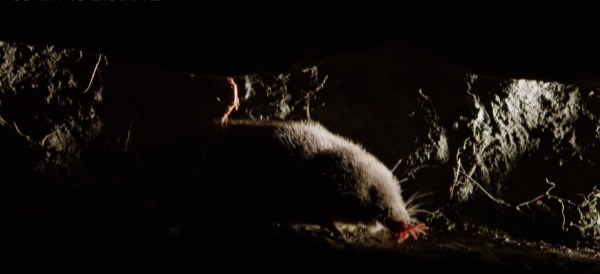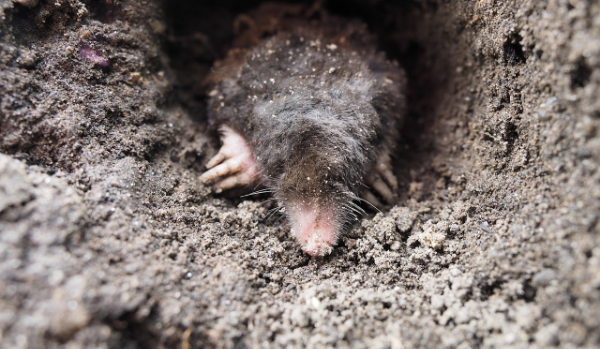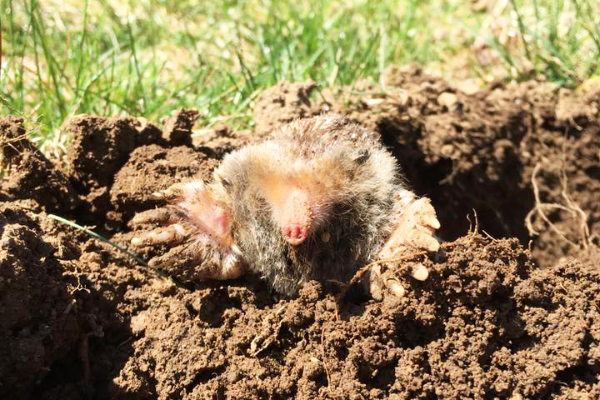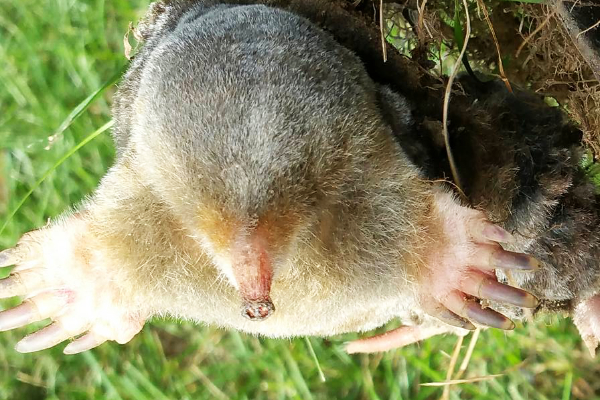Description
Moles
If you’ve seen a small mound of loose, fresh soil, you’ve just seen the handiwork of a mole. Did you know moles are not blind? Nor do they dig up gardens looking for vegetables. Mostly misunderstood and shrouded in misconception, let’s take a look at the common mole.
Appearance
Moles are small creatures with tiny eyes, fleshy pink snouts, short black velvety fur and claws that face towards the back of the animal. Their forearms look very much like spades - which is exactly
what they’re used for. Moles spend their lives digging through soil to find food.
Its ears are not visible, but they’re still present.
Moles are blind, right?
Nope. It’s a common misconception, but moles are not actually blind. They are color blind with really bad vision. So truthfully, they may as well be blind. But don’t feel sorry for them. These little diggers can find their way around just great. They rely on scent and movement sensors on the tip of their nose. These 22 protrusions are each more sensitive than the human hand.
The average mole weighs 72 -128 grams. The average size is 4.4 - 6.25 inches for a fully grown male, 15 cm long with a 4 cm tail. Mole fur is usually black but can be cream, orange, yellow or even white. Moles have dense fur that sticks up so that soil doesn’t get stuck in it as they burrow through the soil.
Moles create networks of tunnels featuring kitchens and bedrooms. Mole tunnels are 2 inches in diameter, permanent tunnels are about 8-12 inches below the surface.
Diet
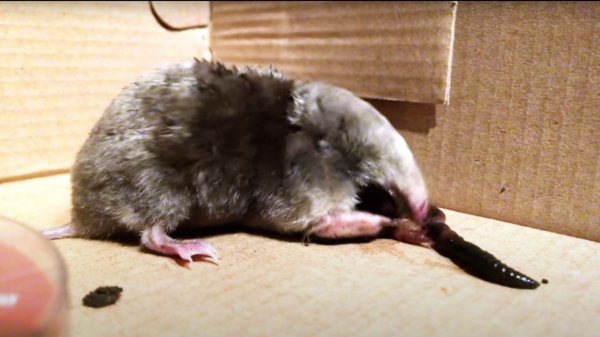
Moles do not eat vegetables. If you find them in your garden (you can’t miss the distinctive piles of fresh, loose soil) they’re looking for earthworms.
An 80kg mole needs 50g of earthworms per day. That’s over 60% of its body mass, every day! In the summer, moles will eat insect larvae but only because they can’t find enough worms.
Remember those kitchens we mentioned earlier? Moles may store live earthworms underground, immobilizing them with a bite to the head, keeping a captive audience of food stocks. Up to 470 worms have been found in one chamber!
The star-nosed mole is a good swimmer, and they eat fish. However, this is a very unusual mole.
Behavior (Social, mating, nocturnal, etc.)
Moles are night owls. Are they partying, painting the town red? Not quite.
Moles are lone wolves, they are not sociable creatures. They prefer to burrow in solitude, creating labyrinths of tunnels.
Moles spend most of their time in a network of permanent and semi-permanent tunnels. Surface tunnels are temporary and usually are only found in newly dug fields or light sandy areas where prey is close to the surface. Otherwise, generations of moles use the same tunnels, deep underground, mazes of miles and miles of tunnels
Although moles are mostly solitary creatures, they make an exception for the ladies. Well, sort of. During the breeding season, moles widen their tunnels in an attempt to find females. Usually 3 or 4 young are born in a litter every year. Moles create bedrooms, small nests within their tunnel walls where they shelter and feed their young. Once the baby moles are all grown up - they’re on their own. The moles separate to live their lonely, digging lives. They go off to dig their own tunnels.
Habitat
Moles are found in Britain, Western states of America, and the Eastern plain lands. We find them in places where the soil is deep enough for tunneling but not moorlands, sand dunes, or coniferous forests because prey is scarce.
Life Expectancy and the Law
Most moles don’t live more than three years, but some survive up to 6. The tenacious mammals have to survive cats, dogs, tawny owls, buzzards, cars, and humans with vendettas. Moles are under attack from below the ground and above. Moles are no longer legally protected.
Often seen as pests because their tunneling damages plants, farmers fume at how one insignificant creature can destroy an entire field. Moles may contaminate grass heaps and severely damage machinery. They are often culled by trapping, a cruel manner of death but not as harsh as poisoning.
Moles can be beneficial. Their tunnels help drain and aerate the soil, boosting growth and promoting plant diversity. Additionally, moles kill and eat harmful pest larvae.
